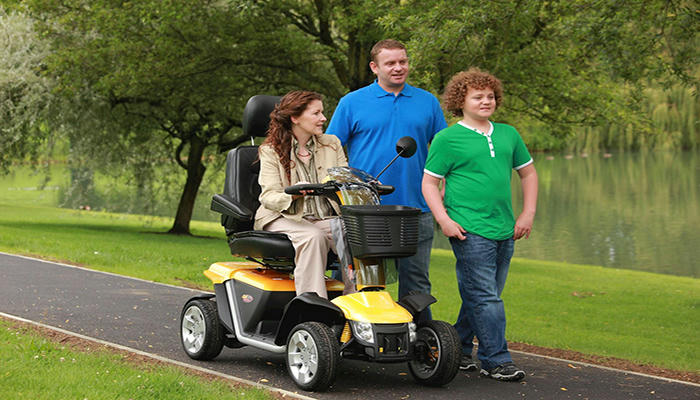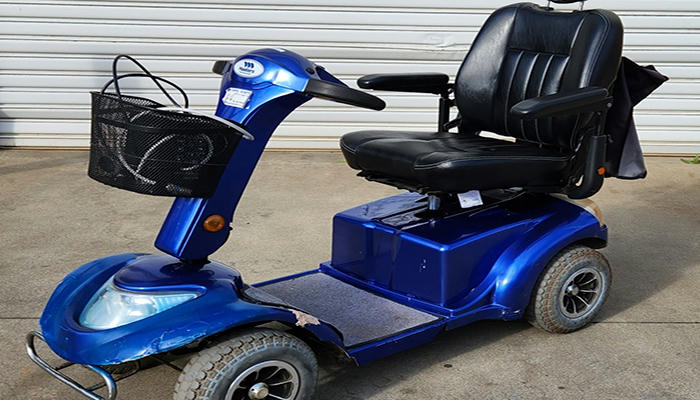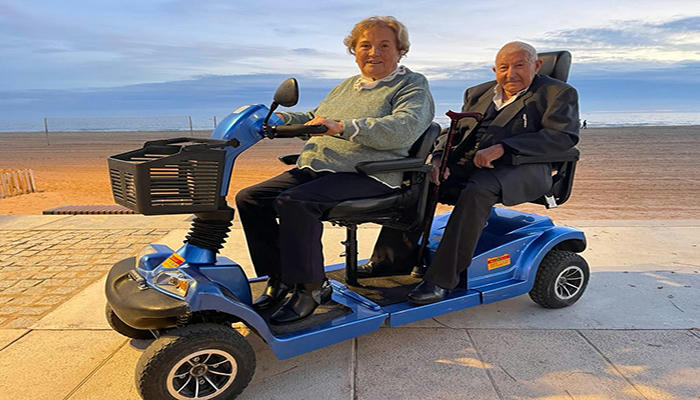What to Look for in a Mobility Scooter for Your Elderly Relatives
Mobility scooters are more than just a way to get around—they’re a key to independence and freedom for seniors. These devices empower elderly individuals to stay active, connect with their community, and move through their environment with confidence. However, selecting the right mobility scooter isn’t as simple as picking the first one you see. It requires thoughtful consideration of your loved one’s specific needs, lifestyle, and the features that will best support them.

What is a Mobility Scooter?
Mobility scooters have become an essential tool for seniors who need a little extra help getting around. Unlike traditional wheelchairs, these scooters offer a unique combination of independence and comfort, making them perfect for those who can still move independently but need assistance for longer distances or uneven terrain.
Powered by batteries, mobility scooters come in three main sizes: small, medium, and large. Each type is designed for different needs, from indoor use to road-legal models for longer trips. They are VAT-exempt, and you can choose to buy new, purchase reconditioned models, or even rent them, depending on your budget and requirements.
Factors to Consider When Choosing a Mobility Scooter
When selecting a mobility scooter for your elderly relatives, several factors should guide your decision. Here’s what to keep in mind to find the best fit.
1. Small Mobility Scooters
Small mobility scooters, often called “boot scooters,” are compact and lightweight. Their main advantage is portability—they can be folded or disassembled to fit into a car trunk. This makes them an excellent choice for indoor use or short trips.
Key Features:
Indoor Use: Perfect for navigating shops, malls, or around the house. Check the dimensions and turning radius to ensure they fit well in tight spaces.
Portability: Easy to transport, but make sure the person handling the scooter can lift and maneuver it comfortably. These scooters typically support a weight capacity of up to 135 kg (21 stone).
Range: Small scooters usually offer a shorter range, up to 10 miles on a single charge, which is ideal for quick outings.
Considerations:
Stability: Smaller scooters may not be as stable as larger models, so ensure the design meets your loved one’s stability needs.
Footplate Size: The footplate on small scooters is often smaller, which could affect comfort and support.
Weight Capacity: Smaller scooters tend to have lower weight limits, so verify this against the user’s needs.
2. Medium-Sized Mobility Scooters

Medium-sized scooters strike a balance between portability and functionality. They are sturdier than small scooters, capable of carrying more weight and traveling longer distances—up to 20 miles on a single charge. With speeds of up to 6 mph, they are suitable for both indoor and outdoor use.
Key Features:
Versatility: Ideal for users who need a scooter for both home use and occasional outdoor trips. Some models are Class 3 scooters, meaning they are road-legal and can be used on roads and pavements.
Turning Radius: While these scooters have a larger turning radius, they offer greater stability and comfort for longer trips.
Charging Needs: Many medium scooters require an outdoor charging point, though some models have removable batteries for indoor charging.
Considerations:
Charging Point: Ensure you have access to an outdoor charging point or check if the battery is removable for indoor charging.
Turning Circle: Medium scooters have a larger turning circle, which may affect maneuverability in tight spaces.
3. Large Road-Legal Mobility Scooters

Large mobility scooters, also known as Class 3 scooters, are designed for extensive travel. They can reach speeds of up to 8 mph and offer a range of up to 30 miles on a single charge. Equipped with features like lights, indicators, and horns, they are built for road safety.
Key Features:
Road Use: These scooters are road-legal and must be registered with the DVLA (though no driving license is required). They are ideal for users who need a scooter for frequent or long-distance travel.
Storage and Charging: Due to their size, these scooters require secure storage and an outdoor charging point, unless the battery is removable for indoor charging.
Considerations:
Storage Needs: Large scooters need ample storage space, so ensure you have a suitable area to keep the scooter when not in use.
Turning Circle: The larger size means a bigger turning circle, which may impact ease of use in confined areas.
Enhancing Your Scooter Experience
Mobility scooters come with standard features, but there are plenty of accessories to improve usability and comfort. Some popular options include:
Walking Stick/Crutch Holder: A convenient attachment for carrying walking aids.
Storage Covers: Protect the scooter from the elements when not in use.
Mobility Scooter Bags: Add extra storage for personal items and groceries.
Waterproof Capes/Ponchos: Keep the user dry during rainy weather.
Conclusion
Choosing the right mobility scooter for your elderly relatives involves careful consideration of their needs, preferences, and lifestyle. Whether you opt for a compact model for indoor use or a road-legal scooter for longer trips, the right choice will provide greater comfort and independence for your loved ones.
For personalized advice, consider consulting healthcare professionals or mobility experts. They can offer valuable insights and recommendations to help you select the best mobility scooter tailored to your elderly relatives’ needs, ensuring they enjoy a safer and more active lifestyle.
